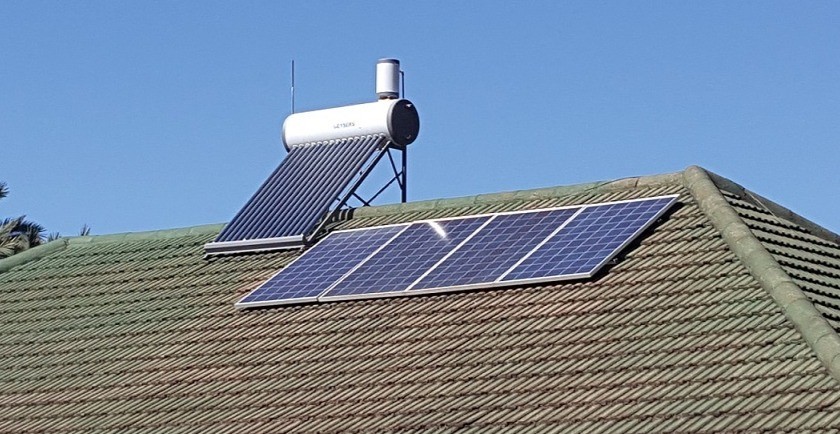By Lemuel Chekai
For the energy insecure citizens living in the slum settlement of Hopely Farm, a few kilometers south of Harare’s Central Business District, rain and winter seasons often solicit disdain.
The area teems with over 200 000 residents yet to be connected onto the national power grid, a situation that has seen them use alternative power sources like solar to power their households.
While a dry and sunny atmosphere is ideal for solar power, the needs of those in Hopley are puzzling at times as they need rains for their unprotected wells- a primary water source- as they are also yet to be connected to the city’s water reticulation system.
“We appreciate it when rainfall quenches our parched lands but overcast skies also mean low sunshine for our solar panels and that is the predicament we are in,” says Lawrence Matikiti.
Winter, on the other hand, comes with reduced temperatures and fewer hours of sunshine as Zimbabwe experiences longer nights and shorter days in this period.
At 24-years of age, Matikiti is among the country’s unemployed youth populace estimated to be at 90% and for him an act as simple as charging his mobile phone could be an escape from vices that emanate from idleness like drug abuse and crime.
“More sunshine hours daily mean I can keep my phone up 24/7 for entertainment because without it I would die of boredom,” he said.
The increased use of solar has been touted as one of the main clean energy transition strategies in the country which is on a quest to switch to more sustainable renewable sources to plug a devastating shortage.
However, in addition to maximum sunshine hours, genuine solar panels and batteries are needed in order to successfully charge and store power for lighting, watching television and charging of electrical gadgets.
There is no doubt that most solar products in poor communities are of low quality and are bound to underperform, leaving them in dreaded darkness.
But, this would not be so if inquiries on genuine and long-lasting solar equipment had been conducted, solar energy experts who spoke to this publication say.
“The same way people hire an electrician for quotations before purchase and installation of electricity conduction materials, they are required to do so as well with solar projects. Unfortunately, with most people, they just buy solar panels and batteries in South Africa without the semantics on dynamics of this power source,” says Brighton Moyo, a solar technician.
“There is always a solar panel made to meet one’s budget as they are classified ranging from class ‘A’ to ‘F’. No ordinary citizen would know this unless imparted with the knowledge,” he added.
While class A types are slightly affected by changing weather patterns, the marginal effects of dull weather on power harvesting grow as the classes move down to ‘F’.
This somewhat explains power scarcity some Hopely residents face on days with limited sunshine hours.
“There’s also another aspect of load against supply capacity of the converter and batteries which also contributes to short-lived power transmission after sunset. These are dynamics around solar energy people should be furnished with before buying or installing,” added Tapiwa Mukarati, a photovoltaic installer.
At the peak of winter and rain seasons, Matikiti says occupants of what was once the farmhouse – the only household connected to the national power grid – make a killing from youths desperate to keep their gadgets charged.
“But I can’t afford to pay these fees on a daily basis as is the case in winter and rainy seasons when our solar panels are obstructed from receiving maximum sunshine. I’m not employed anywhere which makes my financial position little to none,” he said.
Matikiti’s story is one shared by more than 60% of Zimbabweans in the rural and urban areas who are yet to be connected onto the national power grid.
With the nation’s power utility struggling to get everyone connected, influencing many to switch to solar, there is a need for more awareness programs on genuine solar products and other technical information, before the country risks losing consumer confidence in renewable energy.
Meanwhile, noting the fake photovoltaic products that have flooded the local market, the Zimbabwe Energy Regulatory Authority (ZERA) last year indicated that it is set to soon commence the testing and confiscation of fake solar panels.
“ZERA has taken delivery of a solar testing plant and very soon we will go on a blitz, confiscating all fake solar products,” says ZERA Engineer Nobert Mataruse.
He also added: “ZERA is doing all it can to raise public awareness. Very soon we will be going on a campaign across the country to raise public awareness. On our website we have a list of reputable solar dealers and not the dishonest ones we see at the Gulf Complex (a shopping centre downtown of Harare Central Business District).”
According to a 2019 report of the National Renewable Energy Policy, Zimbabwe has a national electrification rate of 42%. A similar report from 2012 notes that electricity has reached 83% of the urban households while rural electrification is still around 13%.
The 2019 policy report aims to achieve an installed renewable energy capacity of 1 100 Megawatts (excluding large hydro) by 2025 in an effort to plug energy poverty in the country.
‘This article was produced with the financial support of WAN-IFRA Media Freedom. Its contents are the sole responsibility of <Lemuel Chekai/BustopTV> and do not necessarily reflect the views of the WAN-IFRA Media Freedom,WAN-IFRA FR, or the Ministry of Foreign Affairs of Denmark.’
